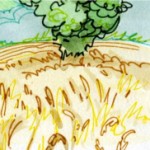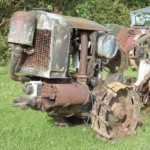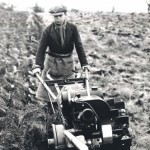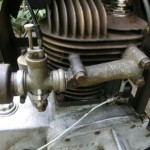Home › Forums › The Machinery Forums › Pedestrian operated machines › Valve trouble on my British Juniour engined Gem
- This topic has 3 replies, 4 voices, and was last updated 5 years, 8 months ago by
 wristpin.
wristpin.
-
AuthorPosts
-
July 16, 2018 at 9:13 am #28839
 vhgmcbuddyMember
vhgmcbuddyMemberHi looking for some help Im in the process of rebuilding a 1947 Howard Gem with a British Juniour engine. I dismantled the engine over the weekend to find two different valves and guides. I think somebody has bodged a different valve in at some point. Anybody know of a valve that will match the original part? I have read of somebody using a lndrover valve but can’t find the info since
Thanks
JayJuly 28, 2018 at 8:07 am #28972 charlieKeymaster
charlieKeymasterJay, it is not unusual to have one valve larger than the other, if the valve fits the seat then it is the right size. One valve may have been replaced which would explain why one has a slot for screwdriver and the other doesn’t, I believe the slot is so you can use a screwdriver when lapping the valves in.
July 28, 2018 at 8:34 am #28973 trusty220Keymaster
trusty220KeymasterWe used to have a special tool (I think it was for Suffolk lawnmower engines) that was designed to oscillate to help with lapping-in valves. The end of it was a screwdriver blade to engage the slot in the valve head, and the whole thing looked like a hand drill; the only difference was that when you turned the handle the output shaft would turn backwards and forwards. Very frustrating if you tried to drill a hole with it!
No doubt somebody on this forum will have had one. At least you know what the slot is for now!
Best of luck with it.Oh- by the way, many engines on “our” machines have a larger exhaust valve than on the inlet. They also have a different valve spring made of thicker wire. This is to help cool the exhaust valve and transfer heat to the crankcase because the exhaust valve doesn’t have the cool air flowing over it that the inlet valve does. Please don’t mix the springs up (if they are different) otherwise you’ll have running problems that are difficult to diagnose.
July 29, 2018 at 6:25 am #28977 wristpinParticipant
wristpinParticipantValves.
Tucked away somewhere I’ve got one of those reciprocating valve-lapping tools – discarded very soon after purchase! For my money, the best aid to valve lapping is the “pneumatic twizzle stick” most easily obtained in the UK as a Briggs and Stratton part 19258.
Woods Power Grip. https://www.wpg.com/catalog/v12753
Various tips picked up over the years.
If the valve and or the seat is bad enough to warrant the coarse paste end of the tin – don’t bother, get the valve refaced and the seat skimmed. For a small extra cost it will be a better job and save time.
If the sucker on the twizzle stick wont stick, turn the valve over and rub the head over a sheet of medium emery cloth to thoroughly clean it and rough it slightly.
Slotted valve heads. Great for twizzling but not easy to lift up for the approved “lift and quarter turn” between twizzles! Search the odds box for a light spring, place it over the valve stem and trim to length so that it holds the valve head just clear of the seat, Press down with your screwdriver in the slot, do the twizzle, release pressure turn the valve and resume twizzling.
Valve size. Certainly, exhaust valves are often larger to aid heat transfer and resist the hostile environment in which they work, and a heavier duty spring will exert more pressure on the valve face to aid “self-cleaning” and heat transfer. However, don’t forget the configuration of the spring; often the coils at one end will be closer together. They are known as “anti surge coils” and the spring should be positioned with them furthest away from the collet or keeper.Good valves are fundamental to a good running engine. No amount of fiddling with ignition or carburetion will compensate for bad valve sealing or clearance.
Quote from my favourite small engine repair book.
“Technicians who are valve critical will always have a better record of repair success than those who take a near enough approach”To which can be added; “may add a little time in the short term but save lots later”!
British Junior Engine – anyone know why it was called that?
This may be useful https://www.dropbox.com/s/1uk2qwhdtojm5e9/British%20Junior%20engine0001.pdf?dl=0
However, it shows the same part number for both the inlet and exhaust valves; so may be your engine has been “modded” or it is a later variation. No date on the booklet but look at the phone number on the front cover – 1950s, I would think! -
AuthorPosts
- You must be logged in to reply to this topic.

